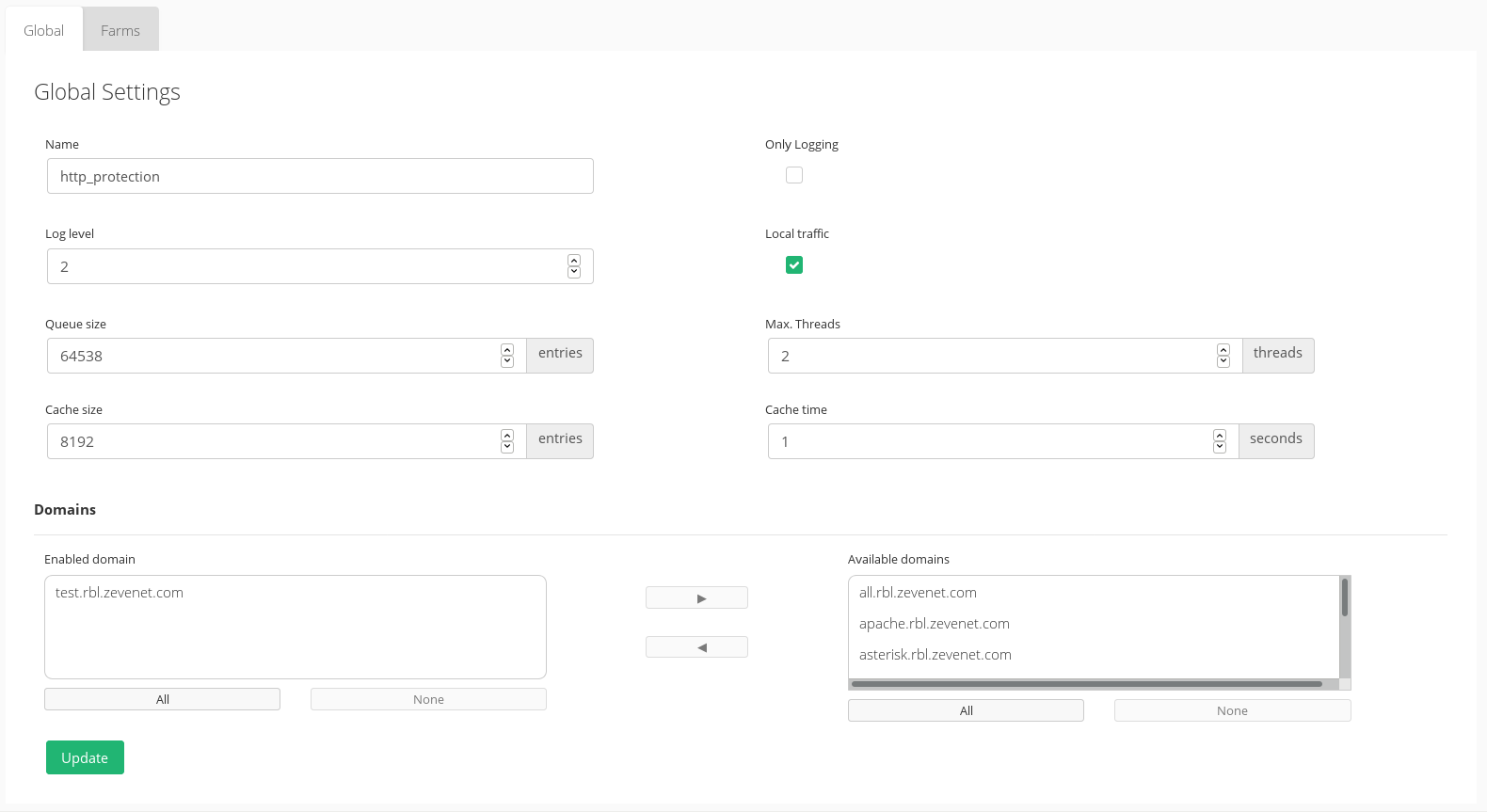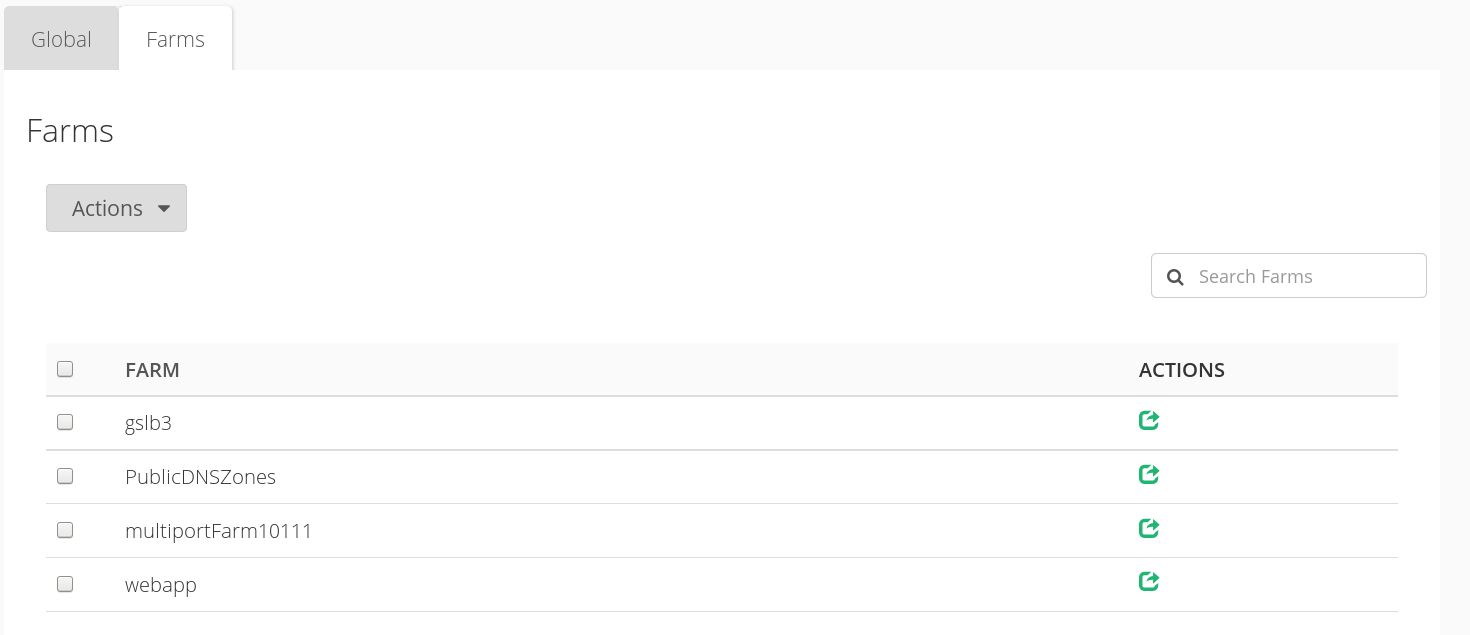This section shows how to add a new IPDS RBL Rule.
Introduce a custom name for your rule. Then choose from the list if you would like to copy the rule from a previous one.
Finally press the “Create” button.
When your rule is created a new screen appears. Please have a look to next picture.
Global Settings for RBL rules
Name. By default the name of the RBL rule.
Log Level. A number from 1 to 5 indicates the level of log detail to be saved in /var/log/syslog.
Queue size. Number of max connections stored in queue waiting to be processed.
Cache size. Number of cached entries saved during the time specified in Cache Time.
Cache time. Specifies how long the resolved dns IPs are saved in Cache.
Max. Threads. Specifies the number of connection processes in parallel. 0 means unlimited.. 0 means unlimited.
Only Logging. Does not block any connection, just log them.
Local traffic. If activated, it tries to resolve in DNS local private IP traffic (10.0.0.0/8, 172.16.0.0/12 and 192.168.0.0/16).
Once you modify one or more of the previous parameters press the “Update” button for changes to take effect.
Domains
Here you will find a list of available domains (inside the right box) which could be enabled just moving them from the right box to the left box. For this purpose, select the domain to be enabled and press the corresponding arrow
Each of the domains keep an updated list of blacklisted ip.
There is a preloaded domain list you could use, but you could also add your custom domains. This can be achieved in the Domain Section you will find in the left main menu. Please, visit IPDS | RBL | Domains for further information.
Farms
In this section you will find a list of the farms protected by your IPDS rules. You could add or remove farms from the list using the “Actions” button.
Please, follow this link for further information about Updating an RBL Rule


